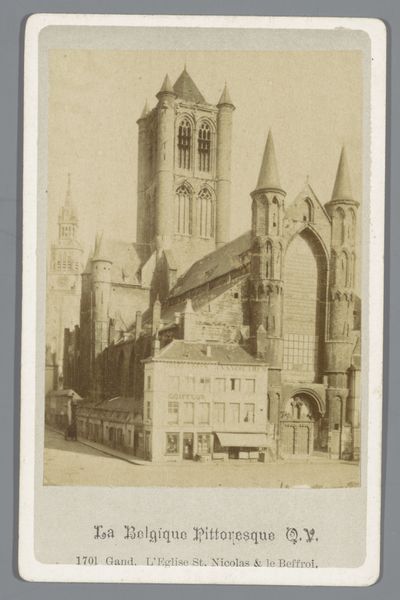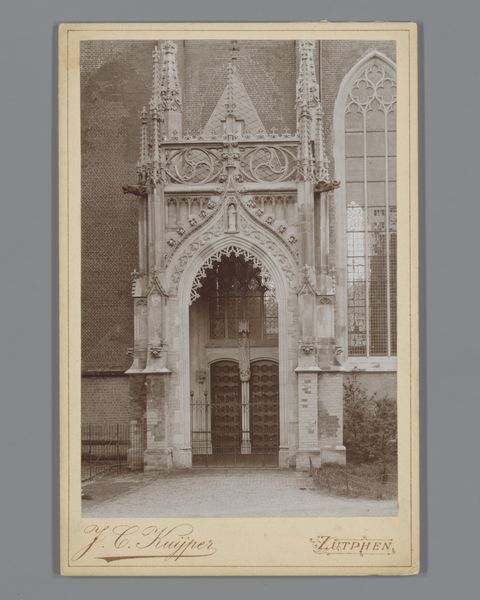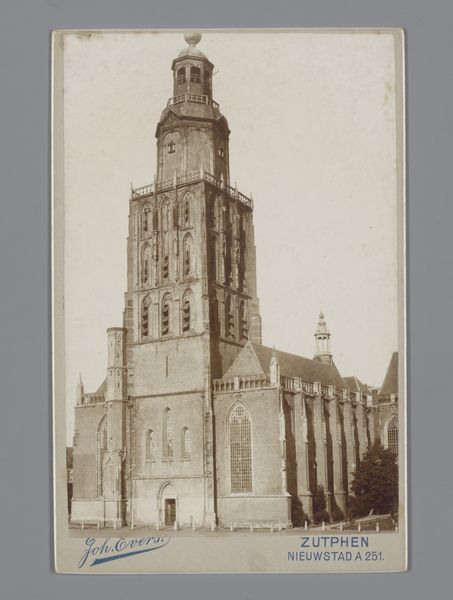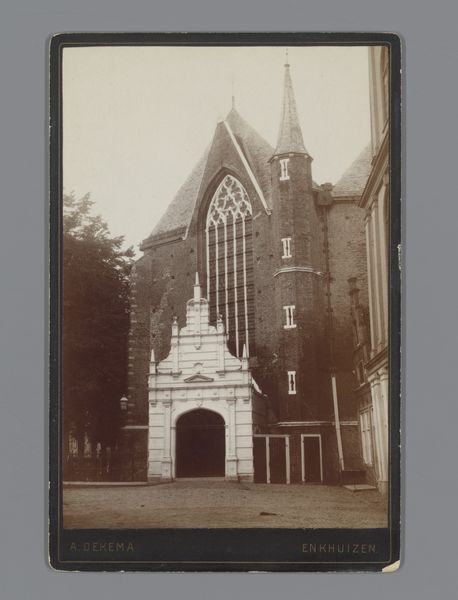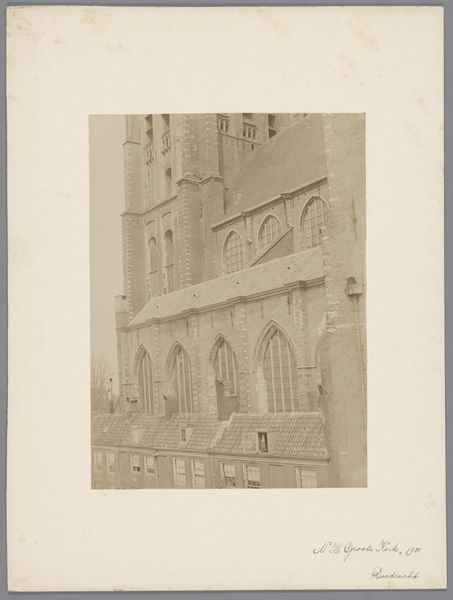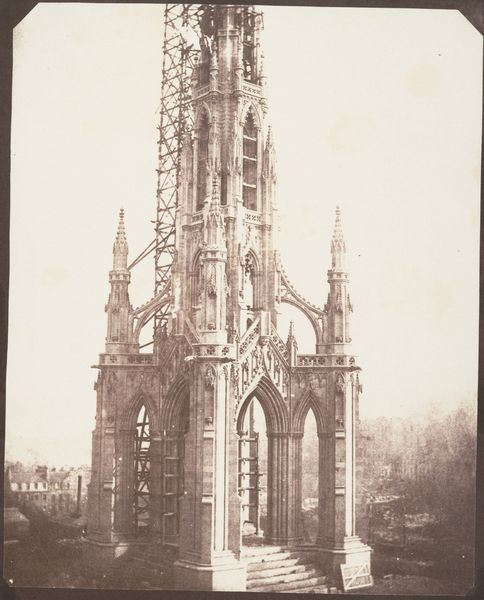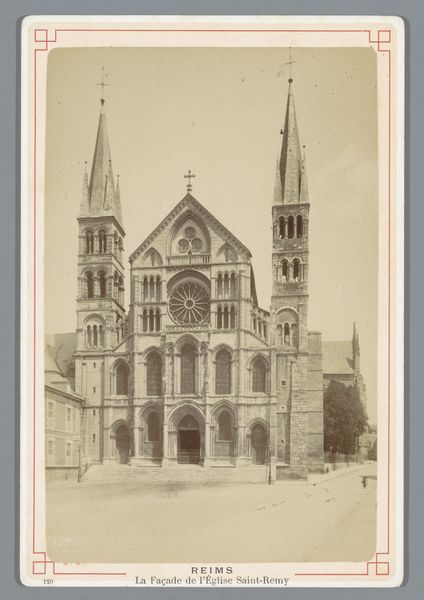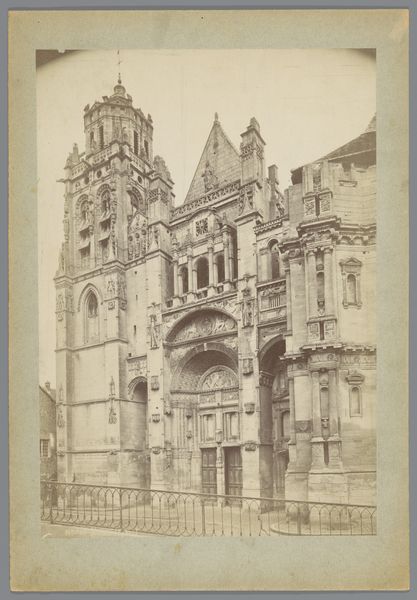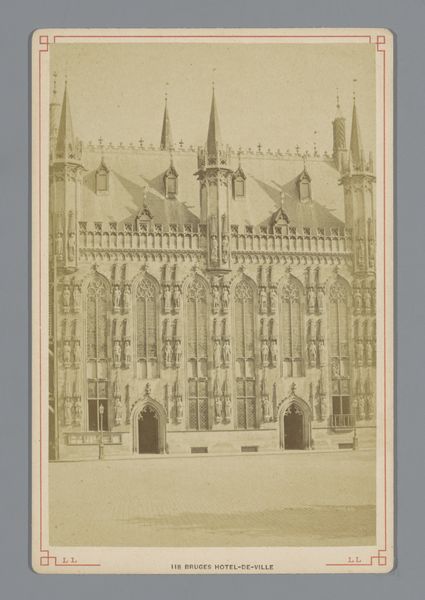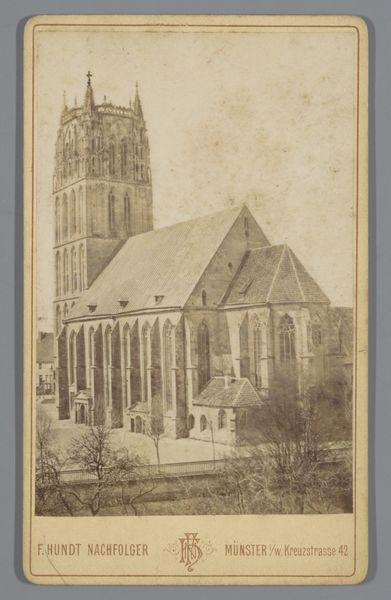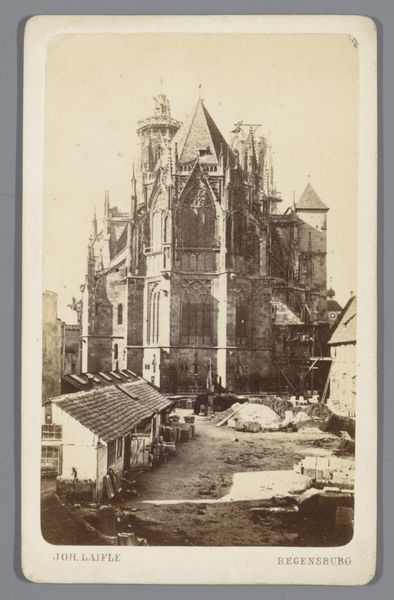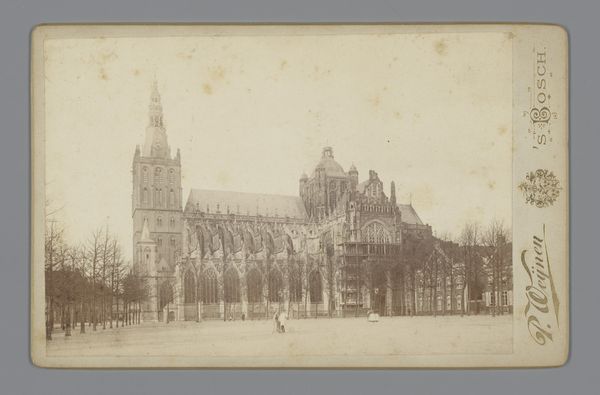
Dimensions: height 167 mm, width 108 mm
Copyright: Rijks Museum: Open Domain
Curator: Standing before us is "Gezicht op de Hooglandse Kerk te Leiden," a gelatin-silver print by Hendrik Jonker, created sometime between 1882 and 1914. Editor: It possesses a stark, almost haunting quality, doesn't it? The verticality of the church, emphasized by Jonker's composition, creates a feeling of awe, bordering on unease. Curator: Precisely. The photographic medium itself is crucial here. The grayscale, combined with the sharp focus on the architectural details—the intricate carvings, the pointed arches—highlights the formal geometry. It pushes and pulls on the romantic elements. Editor: Indeed. And doesn't this photographic capture also offer a lens into the cultural values of the late 19th century? The focus on this grand church speaks to the continued societal importance of religion, despite growing secularization. Churches visually dominating public squares also project specific hierarchies and power structures. Curator: Good point. And how those stark, barren trees in the foreground punctuate that space. Notice how they create almost a screen or a frame, guiding the eye directly up the elaborate facade. He is very self-aware, composing each section to create an ordered viewing. Editor: Furthermore, it subtly acknowledges the limitations of photography at the time. That very limited range of visible texture is fascinating, especially at a time before digital rendering. But these soft imperfections can create emotional depths through these chemical printing techniques. It reveals something essential about both Leiden and about romanticism as it was then developing. Curator: Yes, these early processes yielded a softer definition which makes each architectural feature feel tactile despite the cool reserve of the subject matter. The interplay is captivating. Editor: I agree. This photograph doesn't just record a building; it presents us with a cultural document embedded with ideologies, anxieties, and aspirations. Curator: Ultimately, the lasting power rests in the formal elegance Jonker achieved, transforming the Hooglandse Kerk into an archetype of architectural grandeur. Editor: Absolutely. This particular image captures the nuances of how we publicly performed rituals around civic and religious structures as they played a central role in shaping our identity.
Comments
No comments
Be the first to comment and join the conversation on the ultimate creative platform.
